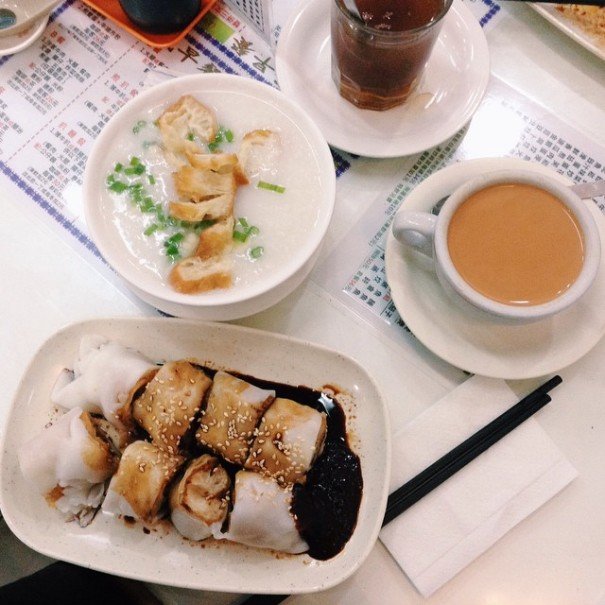
It’s True, “Fried Oil Ghost” Is a Great Name for a Snack

It’s True, “Fried Oil Ghost” Is a Great Name for a Snack
Yauhjagwai in Wan Chai
At breakfast in Wan Chai, I order milk tea, pork meatball jook—porridge—and cheung fun—a rice noodle roll—stuffed with ground beef. I know I won’t be able to finish everything. The jook is there for me to dip my yauhjagwai into. I love jook but I love yauhjagwai more. It’s youtiao in Mandarin, or “oil stick.” The Cantonese name, yauhjagwai or “fried oil ghost” is much better, so let’s call it that.
I’ve looked for yauhjagwai and found it all around Asia, piled up in baskets in the sunshine of Yangon, alongside my morning soy milk in Taipei, called quay and crammed in massive plastic bags in Hanoi, intended for dipping into pho. I don’t always need the pho or the soy milk.
When I moved to New York for college, my Hong Kong friends and I looked for yauhjagwai in Chinatown. We found many, but they never tasted the way they do at home. They were always drier, staler, and sadder. I bought sticks from Cantonese barbecue places, dim sum restaurants, and also those packaged ones you can find in refrigerated sections, and they all sent me into fits of heaving, unbearable homesickness. Yauhjagwai is supposed to be crisp (but not crunchy) on the outside with just a bit of chew on the inside. Air pockets in the dough are good.
The ones in Hong Kong are the length of my forearm. The sticks are found in pairs, conjoined twins stuck together that will slick your fingers with oil during sundering. Don’t get them too late in the day. They can’t be resuscitated.
My uncles frown at me as I whip out my phone to take a photo of my breakfast. Auntie Mary comes to my defense against the disapproval. “The camera eats first. The camera always eats first,” she says.
The congee is perfect. Silky, the way it should be, and seasoned enough to make condiments optional, though a dash of soy sauce and sesame oil never does any harm. When I make jook for myself at home, I’ll add turmeric, to force an extra pinch of health into my body. This pure white jook thus seems a little sinful to me in its perfection.
If I weren’t so fixated on yauhjagwai, this jook would have been the ultimate luxury. I mistook a pot of oatmeal for jook at Auntie May’s house, which caused me great distress. I dislike oatmeal. Auntie May eats it like jook and she puts ground black sesame seeds into it, a sort of Chinese tahini, which she insists keeps one’s hair black because her mother, my Popo, said this was so. I ate the ground black sesame seeds plain and oatmeal-less, by the spoonful, and met my other aunts and uncles for breakfast.
Auntie Mary looks at me doubtfully when I order zha leung, which is yauhjagwai wrapped in a giant rice noodle the way cheung fun is folded around meat and dressed with hoisin sauce and sesame seeds, but I polish it off, dipping some pieces into jook. Starch on starch on starch. I like more croutons in my salad than leafy greens and more yauhjagwai in my jook than well, jook. When the yauhjagwai is this good, jook is only a condiment to me.
Uncle Douglas, whom I call Da Jojo or Big Uncle in Chinese, the only one I always address in Chinese, stares intently at me during my yauhjagwai consumption (he usually ignores me). He says next time I come back, to tell the waitresses that I am his niece. “Remind them about me. You will get a discount.” My aunts all laugh. “No, they will charge her double!” one says.